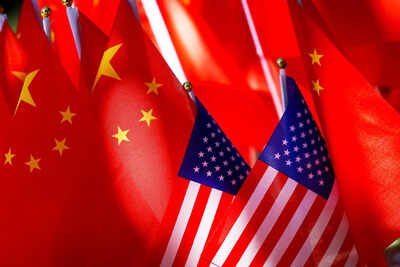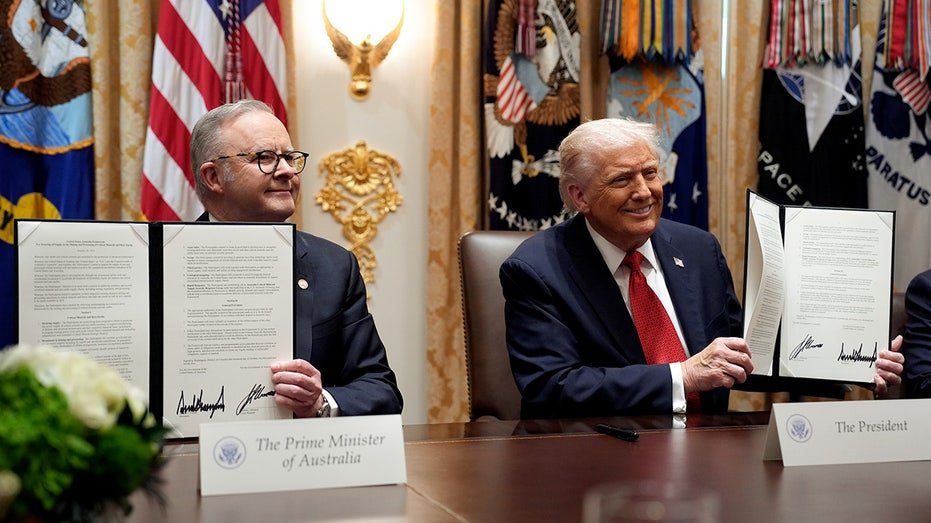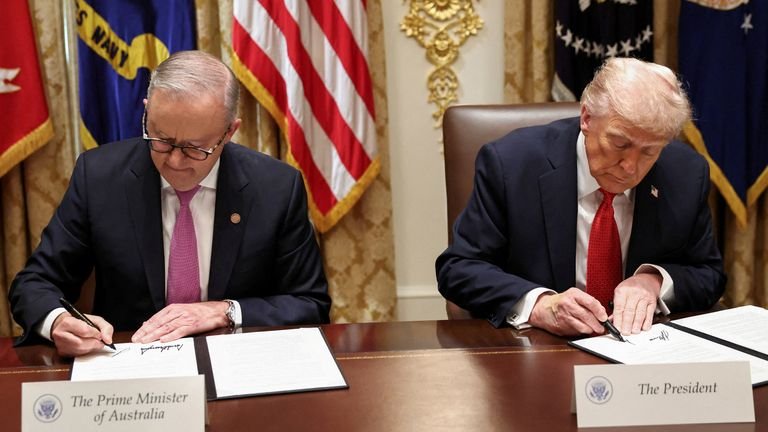China is aggressively accelerating its ambitions in artificial intelligence, pouring unprecedented investments into research, development, and commercialization with a clear strategic objective: to dethrone the United States as the world’s leading AI superpower by 2030. This monumental push, underpinned by comprehensive national strategies and vast financial commitments, is reshaping the global AI landscape and sparking a new era of technological competition.
Beijing’s “New Generation Artificial Intelligence Development Plan,” launched in 2017, serves as the blueprint for this national endeavor, setting ambitious milestones to achieve globally advanced AI capabilities by 2020, make world-leading breakthroughs by 2025, and ultimately establish China as the undisputed global leader in AI innovation by the end of the decade. The scale of this commitment is staggering, with projections indicating China will spend nearly $100 billion on AI in 2025 alone, encompassing both state and private sector funding.
Unpacking China’s AI Innovation Engine and Strategic Depth
China’s AI strategy is a meticulously crafted, state-led initiative that integrates national policy with robust private sector innovation. The “Made in China 2025” initiative, predating the AI plan, laid the groundwork by prioritizing intelligent manufacturing and aiming for technological self-sufficiency. More recently, in January 2025, China launched an $8.2 billion AI fund specifically to bolster its domestic AI ecosystem, reduce reliance on foreign semiconductor technology, and target critical segments of the AI supply chain, from computing infrastructure to algorithms and applications. This fund, partly sourced from China’s Integrated Circuit Industry Investment Fund (the “Big Fund”), underscores a national imperative for chip independence amidst escalating Western export controls. Further emphasizing this integration, Premier Li Qiang’s “AI+ Initiative,” unveiled in March 2024, aims to seamlessly weave AI into the fabric of China’s real economy.
Chinese companies, often designated as “AI champions” by the government, are at the forefront of this innovation wave. Baidu (NASDAQ: BIDU), often dubbed “China’s Google,” has seen its Ernie Bot large language model (LLM) surpass 200 million users by early 2025, while its autonomous driving platform, Apollo, has accumulated over 50 million kilometers of testing. Alibaba (NYSE: BABA) boasts a Qwen family of LLMs with over 90,000 enterprise users and is rapidly expanding its global data center footprint. Tencent (HKG: 0700) has introduced its Hunyuan-A13B AI model, designed for speed and intelligence, and is deeply integrating AI into its super-apps like WeChat, including the Yuanbao AI chatbot. Huawei, despite facing significant sanctions, has developed its Ascend 910C chip and the Pangu family of AI models, demonstrating remarkable resilience and innovation.
Beyond these established giants, a new cohort of “AI Tigers” is rapidly emerging. Companies like Zhipu AI, Moonshot AI (whose Kimi AI chatbot can process queries up to two million Chinese characters), MiniMax (developer of the popular Talkie chatbot and Hailuo AI text-to-video generator), Baichuan Intelligence, StepFun, and 01.AI are attracting top talent and significant funding. DeepSeek, a notable startup, has garnered global attention with its DeepSeek-R1 model, which rivals top Western LLMs like ChatGPT and Grok in performance while requiring significantly less computing power and cost. This efficiency-focused approach is a direct response to chip export restrictions and a strategic advantage for sustainable AI development, with DeepSeek-R1 already adopted by both Chinese and some US platforms. China’s embrace of open-source AI, with firms actively releasing powerful models like DeepSeek, Qwen-3, and Kimi K2, further distinguishes its approach, fostering domestic innovation and offering accessible alternatives globally.
Reshaping the Global AI Competitive Landscape
China’s aggressive AI push carries profound implications for AI companies, tech giants, and startups worldwide. The primary beneficiaries within China are undoubtedly the designated “AI champions” and the burgeoning “AI Tigers,” which receive substantial state backing, preferential policies, and a vast domestic market to scale their technologies. These companies are now direct competitors to established US tech giants like Google (NASDAQ: GOOGL), Meta Platforms (NASDAQ: META), and leading AI research labs like OpenAI and Anthropic.
The competitive implications are stark. China’s strategy of offering high-performing, cost-effective, and often open-source AI models is a direct challenge to the proprietary ecosystems prevalent in the West. This approach could disrupt existing product offerings and services, particularly in developing nations where cost and accessibility are critical factors. For instance, the efficiency of models like DeepSeek-R1 could put pressure on the pricing and resource demands of Western alternatives. China’s proactive expansion of AI infrastructure and cloud platforms across Asia, Africa, and Europe, led by companies like Alibaba and Huawei, aims to offer cheaper alternatives to US providers, potentially shifting global market share and establishing new technological spheres of influence.
This strategic positioning is not merely about market competition; it’s about establishing global AI standards and norms. By exporting its AI frameworks and open-source models, Beijing seeks to gain diplomatic and economic leverage, challenging the existing tech order. The “Military-Civil Fusion” strategy, which integrates AI advancements across commercial and defense sectors, further underscores the strategic nature of this competition, allowing for focused resource allocation and rapid deployment of AI capabilities.
The Broader Significance: A New AI World Order
China’s AI ambitions fit squarely into a broader global trend of technological nationalism and geopolitical competition. This is not merely an economic race but a contest for future influence, national security, and ideological leadership. The sheer scale of China’s state-led investment and coordinated innovation efforts represents a distinct model compared to the more decentralized, privately driven AI development in the US. This centralized approach, while raising concerns about data privacy and state surveillance, allows for unparalleled focus and resource mobilization towards national AI objectives.
The impacts are far-reaching. China’s drive for technological self-sufficiency, particularly in advanced semiconductors and AI models, aims to reduce its vulnerability to external pressures and sanctions, fostering a more resilient domestic industry. Economically, a leading position in AI would grant China immense leverage in global trade, industry, and innovation. However, potential concerns include the ethical implications of AI development under state control, the risk of AI-powered surveillance technologies being exported, and the dual-use nature of many AI advancements, particularly given China’s military-civil fusion doctrine.
Comparing this to previous AI milestones, China’s current trajectory marks a pivotal moment, perhaps even more significant than the initial breakthroughs in deep learning. While the US historically led in foundational AI research, China’s rapid commercialization, massive data advantage, and strategic long-term planning are allowing it to quickly close the gap and, in some areas, even pull ahead. NVIDIA (NASDAQ: NVDA) CEO Jensen Huang has notably warned against US complacency, stating that the US is “not far ahead,” highlighting the intensity of this competition.
The Horizon: Future Developments and Looming Challenges
Looking ahead, several key developments are expected to unfold in China’s AI landscape. Near-term, expect continued, aggressive investment in domestic chip manufacturing and AI computing infrastructure to circumvent existing export controls. The “AI+ Initiative” will likely see further integration of AI across traditional industries, boosting productivity and creating new application areas. The “AI Tigers” are poised for further breakthroughs, particularly in optimizing LLMs for efficiency and developing specialized AI models for various industrial applications.
Potential applications on the horizon include more sophisticated AI-powered bipedal robots (as seen with Agibot’s rapid manufacturing efforts), advanced autonomous systems, and widespread adoption of multimodal AI models like the open-source WuDao 3.0. China’s focus on open-source development will likely continue to expand, aiming to build a global community around its AI ecosystems, particularly in regions receptive to alternatives to Western tech.
However, significant challenges remain. While China has shown remarkable adaptability, sustained US export controls on advanced AI chips could still impact the pace of development for the most cutting-edge models. Attracting and retaining top global AI talent amidst geopolitical tensions will also be crucial. Furthermore, ensuring the ethical and responsible deployment of AI, particularly given the scale of its integration into society, will be a continuous challenge that China, like other nations, must address. Experts predict that while the US may retain a lead in certain niche foundational research areas, China is on track to become a dominant force, potentially leading in specific AI applications and global market share, fostering a more multipolar AI world.
A New Era of AI Competition: A Comprehensive Wrap-Up
China’s AI ambitions represent one of the most significant technological narratives of our time. The key takeaway is a nation-state fully mobilized, committing vast resources and strategic foresight to achieve global AI leadership. This is characterized by heavy government investment, a vibrant ecosystem of established tech giants and innovative startups, and a clear vision for technological self-sufficiency and global influence.
The significance of this development in AI history cannot be overstated. It marks a decisive shift from a largely US-dominated AI landscape to a fiercely competitive, potentially multipolar one. This competition is not just about who develops the fastest chips or the most powerful algorithms, but about who sets the standards, shapes the applications, and ultimately defines the future of AI’s impact on society, economy, and global power dynamics.
In the long term, China’s rise in AI will undoubtedly reshape global tech leadership, fostering a more diverse and competitive AI ecosystem. The world will likely see a bifurcation of AI standards, supply chains, and application ecosystems, leading to a complex geopolitical and economic environment. What to watch for in the coming weeks and months includes further announcements of government funds and initiatives, new breakthroughs from Chinese AI companies, and the evolving responses from US policymakers and Western tech companies as they grapple with this formidable challenge. The race for AI supremacy is far from over, and China is proving to be a formidable, fast-moving contender.
This content is intended for informational purposes only and represents analysis of current AI developments.
TokenRing AI delivers enterprise-grade solutions for multi-agent AI workflow orchestration, AI-powered development tools, and seamless remote collaboration platforms.
For more information, visit https://www.tokenring.ai/.







